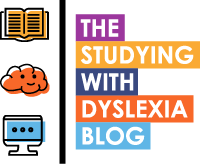Processing language is a key challenge with dyslexia. It seems ironic then that for most of us who are trying to understand more about dyslexia, we have to understand the jargon that comes with it. Dr Sue Wilkinson has written a great article that explains some of the aspects of dyslexia.
This article is brought to you by Sonocent.
I am all for finding information about dyslexia that can be useful to those of us who need to and want to understand more about this condition that affects about 10 to 155 of our population.
There are lots of assumptions being made about dyslexia that can often lead to the life of a dyslexic pupil becoming harder and harder as they pass through the education system.
As parents and teachers we need to understand as much as possible about dyslexia but sometimes the technical jargon is difficult to understand. Two terms that confuse me are ‘verbal reasoning’ and ‘non-verbal reasoning’ and so I was delighted to find an article that was written by Dr Sue Wilkinson a cognitive psychologist, Senior Fellow of the UK’s Higher Education Academy and Director at NeuroDigital Consulting Ltd, on the Sonocent Blog.
The article gives a clear definition of both terms as well as explaining as to how they relate to dyslexia.
One part of this blog article talks about language and cognition and how these functions are controlled by the brain. It talks about how the shape of the brain is different for people with dyslexia. It is clear that there are physical differences between the brain of someone with dyslexia and someone without. It is not a condition that is imagined as many people may say.
If you are a parent or a teacher I recommend you taking a look at this article by clicking the ‘Dr Sue Investigates’ banner .





